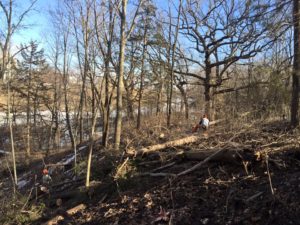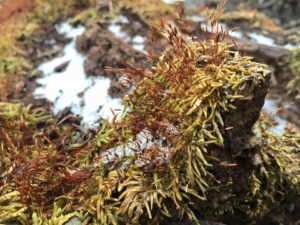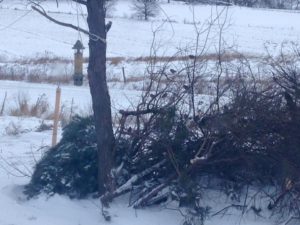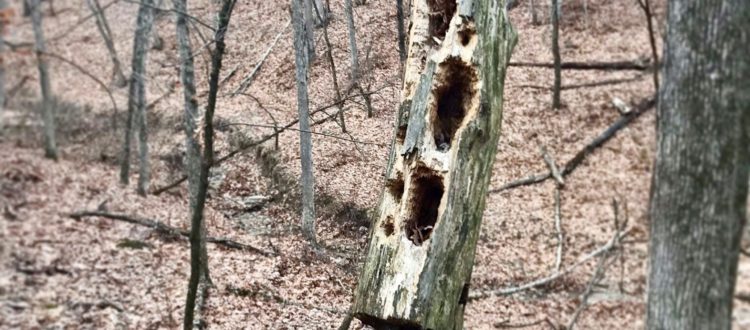The Second Life of a Tree: Fostering Biodiversity with Dead Trees and Woody Debris

A forest with trees in many stages of growth and decomposition is structurally rich, and supports biodiversity and stability.
Not so long ago, foresters were taught to calculate the value of a woodland by the number of healthy, living trees that could be used for human purposes. Dead trees–considered useless–were removed, burned, and ignored. It was only after closely observing interactions between dead plants, microorganisms, and animals that foresters realized that dead standing trees, rotting logs, and other woody debris on a forest floor are vital to the health and stability of the ecosystem.
Standing Dead Trees
Many species of birds, such as eastern bluebirds and wood ducks depend on standing dead trees with cavities to nest in. Cavities, formed by decay and weathering, as well as woodpeckers, are also essential habitat for bats and other mammals, and many species of insects, amphibians, and reptiles.
To ensure maximum wildlife habitat value, each acre of forest should be home to 6-10 standing dead trees. In an urban forest or acreage, dead trees at a certain stage of decomposition can pose a danger to people or buildings. To preserve habitat value while reducing any threat, these trees can be trimmed down to a lower height. In some cases, the best option may be to cut down the dead tree, and leave the logs and branches on the woodland floor.

Moss–a bryophyte–growing on a decomposing log in a central Iowa woodland.
Logs and Woody Debris
When a dead tree eventually falls to the ground, fungi, lichen, and other microorganisms continue the process of decomposition. At this point, some of the nutrients in the decomposing material become available to other plants in the forest, and others provide food for small insects such as beetles, mites, and ants. Nutrients from the dead tree work their way up the food chain as these small insects become food for other animals. Snails, shrews, voles, and salamanders move in—taking advantage of the food source as well as the shelter provided by logs and woody debris.
Another place where structural diversity and heterogeneity is important is in waterways. When dead trees fall into a river, it collects other woody debris to form a debris jam. This provides critical habitat for fish and macroinvertebrates, where the habitat is protected, the shade facilitates cooler temperatures, and the structure provides some stability during floods.
Biodiversity in Your Backyard – Build a Wildlife Brush Shelter
If you have a yard or acreage, and woody debris from fallen branches, pruning refuse, or recently fallen trees, consider building your own Wildlife Brush Shelter. In just an hour or two, you can create a haven for wildlife, from dragonflies to amphibians and diverse songbirds. Read about the fantastic benefits of Wildlife Brush Shelters, and how to build your own here, with the NWF’s excellent guide. DIY brush construction: first, place larger logs on the bottom, with gaps between them for a mammal highway.

This front yard Wildlife Brush Shelter is located next to a birdfeeder. An expired Christmas tree provides extra protection from northern winter winds.
Add another layer or two–each set perpendicular to the prior layer. Then, place increasingly smaller branches on top, to provide shelter from the elements, and a place for birds and insects to perch.
Did you know that most of Iowa’s native bees nest in the ground, and require bare soil that is slightly compacted but undisturbed? The exposed soil that forms underneath a dense brush pile creates important nesting habitat for native bees and other pollinators.
Want to learn more about dead trees and forest ecosystems? Check out this article from The New York Times: In Spring, Nature’s Cycle Brings a Dead Tree to Life. Also, from the U.S. Fish and Wildlife Service: Seeing Life in the Undead: Understanding the Importance of Snags in Forest Ecology.

